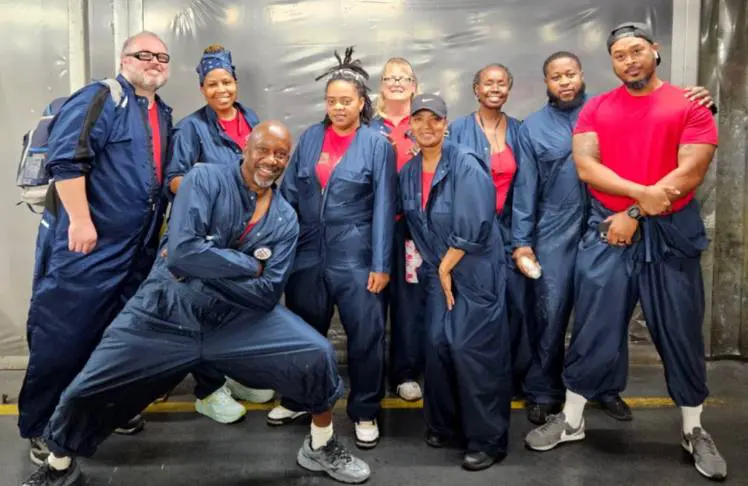
For the first time ever, the United Auto Workers is striking against all of the Big Three automakers: Ford, General Motors, and Stellantis, which manufactures Chrysler, Dodge, and Ram, among other brands. The strike is unlike others in the past for a number of other reasons too.
Rather than shutting down all union shops, the UAW’s so-called standup strike (a nod to the historic sit-down strikes in Flint, Michigan, that gave birth to the union) will close plants on a rolling basis; today, thousands of workers walked off the job at three plants, one from each of the Big Three.
The stakes are different too, because, in addition to the usual contract issues like pay and benefits, the union is pushing to get workers at electric-vehicle battery factories, which tend to be joint ventures between automakers and battery manufacturers, included in the UAW’s master contract. This is a strike aimed to ensure that the auto industry of the future is not only green, but union too.
While UAW doesn’t keep demographic info, Black workers are the most likely to be represented by a union, and it’s estimated that the majority of U.S. factory jobs will be held by minorities as early as 2029.
Meanwhile, electric vehicle sales broke a record in the first quarter of 2023, accounting for over 7% of the total number of cars sold for the first time ever, and that’s only expected to rise in the years to come. In a report, Bank of America said that internal combustion engine dominance is over.
But the shift, driven in part by the generous tax credits offered through President Biden’s Inflation Reduction Act, represents something of an existential crisis to autoworkers: EVs have about 30% fewer parts than traditional cars and trucks, and some 35,000 jobs at engine and transmission plants could be lost because electric cars simply do not need those components.
This is a strike aimed to ensure that the auto industry of the future is not only green, but union too.
But rather than resist the inevitable shift to electric vehicles, the union is instead looking to the new battery factories that are being built both in the Midwest — a UAW stronghold — and the far less union-friendly South as organizing opportunities.
The IRA includes the stipulation that, in 2024, 60% of battery components must be made in North America for a car to qualify for tax credits; come 2029, that will rise to 100%. That requirement has sparked an onshoring rush in battery manufacturing: in 2019, there were just two E.V. battery plants in the U.S., while today, there are 30 in some stage of planning, construction, or operation. Not only are the automakers set to benefit from the tax credits available to consumers, but they are also receiving huge amounts in low-cost government loans to help jump-start domestic production.
The question is if they will be good-paying union jobs for the many non-white workers who are likely to be hired.
In June, Biden’s Energy Department gave $9.2 billion to help fund three plants jointly owned by Ford and the South Korean battery maker SK that will be built in Kentucky and Tennessee. Because such factories are only partly owned by an automaker, they aren’t included under the UAW’s contract.
Shawn Fain, the newly elected UAW president, was furious about the loans, saying they were made with “no consideration for wages, working conditions, union rights or retirement security.”
The loans have hurt President Biden’s relationship with the union; UAW is currently withholding its endorsement for his reelection over the administration’s EV policies.
In another battery factory in Ohio that is jointly owned by General Motors, wages start at $16.50 and rise to $20 over seven years; a nearby GM plant that was shuttered in 2019, UAW workers earned upward of $32 an hour. Currently, UAW represents one Ohio battery factory, which voted overwhelmingly to join the union.
With battery jobs set to grow as all these new factories come online, the question is if they will be good-paying union jobs for the many non-white workers who are likely to be hired there, or if they will be low-paying ones. With this strike, UAW is making a strong case for the answer that it wants to see.















